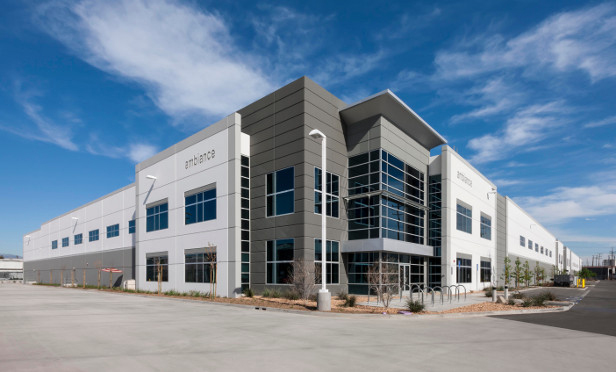 Ames: “It’s very hard sometimes to justify being the early mover, but if you can figure out how to be the early mover in a supply-constrained market, you will be rewarded for having done so.”
Ames: “It’s very hard sometimes to justify being the early mover, but if you can figure out how to be the early mover in a supply-constrained market, you will be rewarded for having done so.”
LOS ANGELES—After eight years of effort, Trammell Crow Co.’s development team was able to convert a brownfield property in Downtown Los Angeles that had sat vacant for 30 years into Clean Tech Manufacturing Center, a 372,000-square-foot, state-of-the-art industrial complex in a 900-million-square-foot industrial market with a 1.6% vacancy rate. GlobeSt.com spoke exclusively with TCC managing director Gregory Ames, developer team leader for the project, about the challenges his team faced and how they overcame them in this exclusive look at one of NAIOP’s I.CON Impact Projects, which will be featured at the conference April 5-6 in Dallas.
GlobeSt.com: What were the most interesting aspects of the Clean Tech Manufacturing Center development?
Ames: This project goes way back. I started pursuing it in 2007. There were three elements that are worth looking at as learning moments. The first one was that this was a speculative industrial development decision that was made in 2011. There was virtually no development activity in the market at that time. Getting capital to get this size project in a market with no activity in the product category was a challenge, but it was also a testament toward the early-mover advantage in a supply-constrained market at the early point of the cycle. Finding a capital partner and a team that understood the dynamic and the story and was willing to make a move on the opportunity when all of the data to support the business plan wasn’t necessarily there—that was one challenge.
The second challenge was cooperation with public agencies. We were ready to go with board approval for the community redevelopment agency to approve the deal right at the same time that Governor Brown had disbanded the redevelopment agencies. We sat in limbo waiting for the state Supreme Court to rule on whether the governor had the right to do that. Basically, this was a test case for how to get a post-community redevelopment association (CRA) deal approved in a successor process with a finance office. We were literally the guinea pig deal, the first project to go through the system in the post-CRA world. We were in government limbo for more than a year after we were ready to go. It was tricky, and we literally had to force the process. It had to get reviewed by a successor agency, but that agency didn’t exist at the time—they had to create one. It took a lot of wherewithal and patience on the part of investors and public agencies.
Third was the challenge of brownfield development. This was a site that had been qualified and quantified inside and out. It had been owned by the State of California and then the City and then the RDA. There were multiply Phase 1s and Phase 2s, a vapor-extraction system on the site, and nonetheless this didn’t prevent us from running into more than 10,000 cubic yards of contaminated soil on the site. But we had contingencies in place to accommodate that, and we were able to manage and work with the City to get through the process. It was a reminder: when you’re developing on a brownfield site, it’s a brownfield until the project is done.
 Eight years to the month TCC had its first meeting on the project, the final building at Clean Tech Manufacturing Center was sold.
Eight years to the month TCC had its first meeting on the project, the final building at Clean Tech Manufacturing Center was sold.
GlobeSt.com: Is it rare for a project like this to come along?
Ames: This type of deal is relatively rare because of the size of the property and the location. But each of these dynamics on their own are relatively common. Putting together a business case when the data isn’t there to support it happens all the time. Some type of public-private partnership or public acquisition and not having a clear path through the bureaucracy or administration is common, and so is developing on a brownfield in California. Each is a common scenario on its own, but not all in one deal—that’s very unique.
GlobeSt.com: How did you collaborate with the local agencies to make the project successful?
Ames: In 2010, we had responded to a RFP that was led by the community RDA of Los Angeles, and we came in second. The first proposer didn’t meet the qualifications until they were selected, and then they fell out when realities came up. The CRA rolled to us as the number-two proposer, and we were able to step in with some minor modifications to the proposal to move the deal forward. One of the initial challenges to the deal was that the site had numerous redevelopment plans that never moved forward, and a note was due on a loan that the CRA was carrying on the project. So, there was a liability associated with the property that had to be dealt with—they had to true up with the bank. Also, this site had been designated by the CRA in cooperation with elected officials. The vision of much of Greater Los Angeles and down from the federal government in the White House at the time was all about cleantech manufacturing. One of the biggest issues was that the CRA had hopes to put a deed restriction on the property that it could only be used for cleantech manufacturing. We can’t control who the tenants are in the market—we could create incentives, but if the users aren’t out there, there’s no way to finance the development and move through with the elimination of blight and create jobs, which is the intent of these projects. It took time, patience and cooperation with the CRA so that we would be incentivized in every way to deliver to those units, but we had to have the ability to move forward with other users if we had exhausted every resource in getting cleantech users. Ultimately, that’s what made it financeable.
GlobeSt.com: Please discuss the points you’ll be making on your case study at I.CON: Impact Projects.
Ames: First, it’s very hard sometimes to justify being the early mover, but if you can figure out how to be the early mover in a supply-constrained market, you will be rewarded for having done so. The challenge is making the case for being the early mover. The second point has to do with public-private partnerships, which are increasingly important as they relate to doing new development because government agencies and municipalities own so much real estate and control the development process at every level. As difficult as it is to get a deal done, where there is a will, there is a way. It may be painful and slow, but where there is political will, there is almost always a way. Developers often underestimate the amount of time it takes to get that done, or they run out of steam halfway down the field. Third, understand your brownfield development risks and have a plan. We finally sold the last building in February 2015, after first meeting on the pursuit in February 2007—it took eight years.

















 Copyright © 2024 ALM Global, LLC. All Rights Reserved.
Copyright © 2024 ALM Global, LLC. All Rights Reserved.